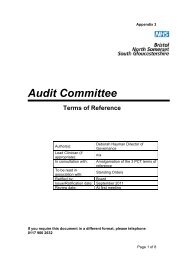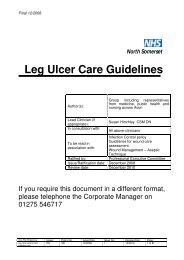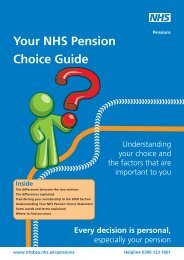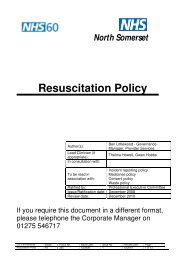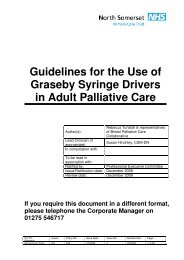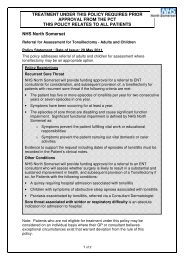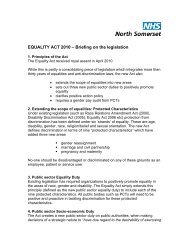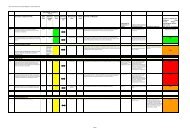Director of Public Health Annual Report 2011 - NHS North Somerset
Director of Public Health Annual Report 2011 - NHS North Somerset
Director of Public Health Annual Report 2011 - NHS North Somerset
Create successful ePaper yourself
Turn your PDF publications into a flip-book with our unique Google optimized e-Paper software.
Chapter 2<br />
Human Immunodeficiency Virus (HIV)<br />
What’s the problem?<br />
HIV is a virus that attacks the body’s immune<br />
system leaving those infected at risk <strong>of</strong> other<br />
infections or diseases such as pneumonia or<br />
cancer. The infected person can remain with -<br />
out symptoms until advanced stages <strong>of</strong> HIV<br />
infection – this stage is also known as acquired<br />
immune deficiency syndrome or AIDS. HIV can<br />
be passed from one person to another in a<br />
number <strong>of</strong> ways including unprotected sex,<br />
sharing <strong>of</strong> contaminated needles, or from a<br />
mother to her unborn child.<br />
In 2010, there were 104 people living in <strong>North</strong><br />
<strong>Somerset</strong> who were accessing treatment for<br />
HIV, two thirds <strong>of</strong> whom were men. Since<br />
2005, the number <strong>of</strong> people living with HIV in<br />
<strong>North</strong> <strong>Somerset</strong> has increased by 63% (Figure<br />
2). Despite the rise, the level <strong>of</strong> infection is<br />
lower than the England average.<br />
<strong>Director</strong> <strong>of</strong> <strong>Public</strong> 2<strong>Health</strong> <strong>Annual</strong> <strong>Report</strong> <strong>2011</strong><br />
It is not clear how much <strong>of</strong> this increase is<br />
due to people living longer with HIV, new<br />
infections acquired in <strong>North</strong> <strong>Somerset</strong>, or<br />
people with HIV moving into the area. Data<br />
on new cases <strong>of</strong> HIV is only available on those<br />
diagnosed in genito-urinary medicine (GUM)<br />
clinics, where five new cases were diagnosed<br />
in 2010.<br />
For those people in <strong>North</strong> <strong>Somerset</strong> living<br />
with HIV in 2010, the most common way they<br />
became infected with HIV was sex between<br />
men and women (49%) and sex between men<br />
(41%). This pattern has remained relatively<br />
unchanged since 2005. Only 4% <strong>of</strong> HIV<br />
infections <strong>of</strong> those living with HIV in 2010<br />
were from injecting drug use, a reduction<br />
from 7% in 2005.<br />
Over half <strong>of</strong> all infections were detected in<br />
the 35-54 age group and approximately half<br />
<strong>of</strong> those living with HIV reside in the Westonsuper-Mare<br />
area.<br />
Figure 2 Number <strong>of</strong> individuals seen for HIV care in <strong>North</strong> <strong>Somerset</strong> (2005 – 2010)<br />
Source: Survey <strong>of</strong> Prevalent HIV Infections Diagnosed (SOPHID).<br />
9



